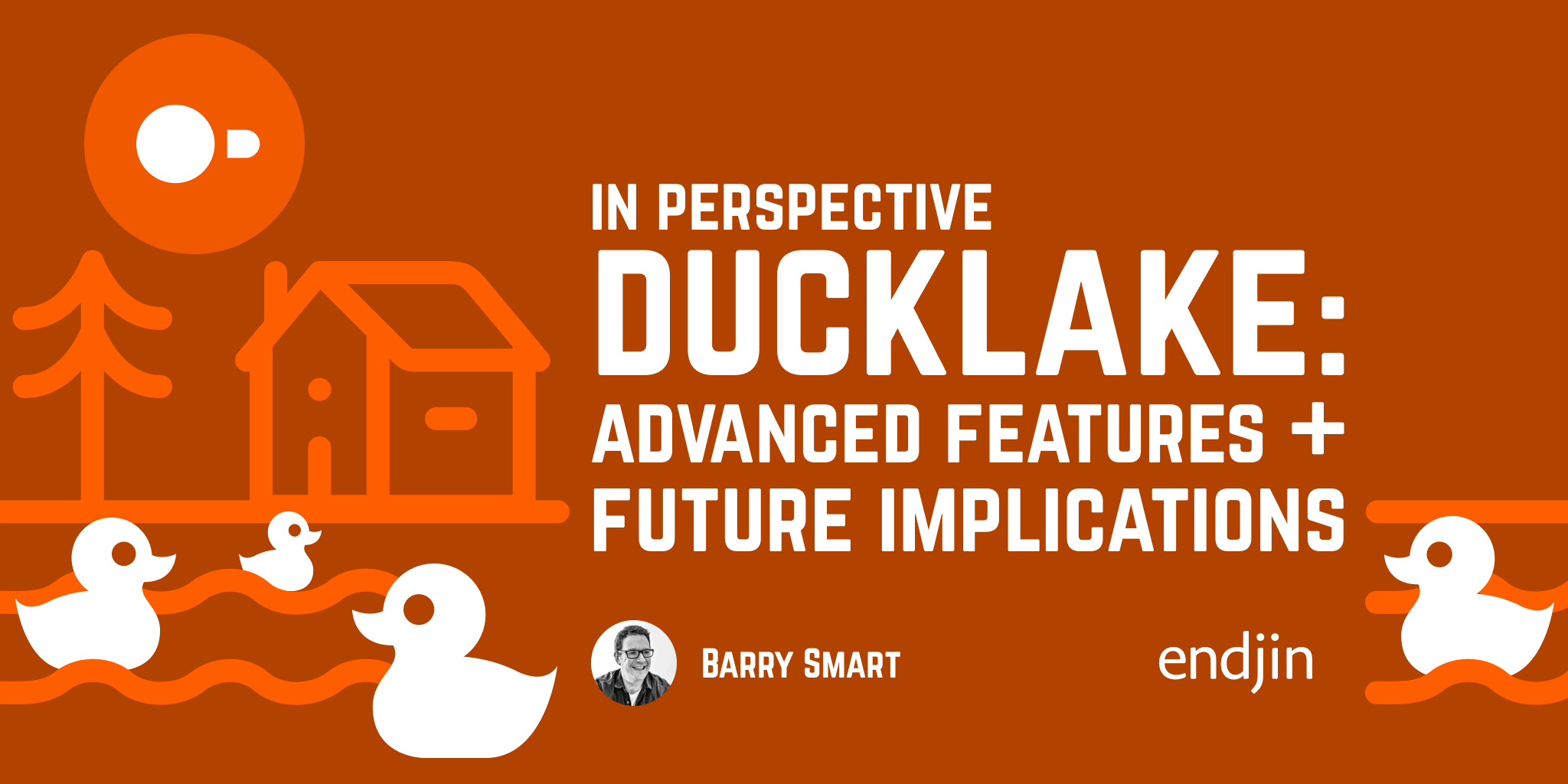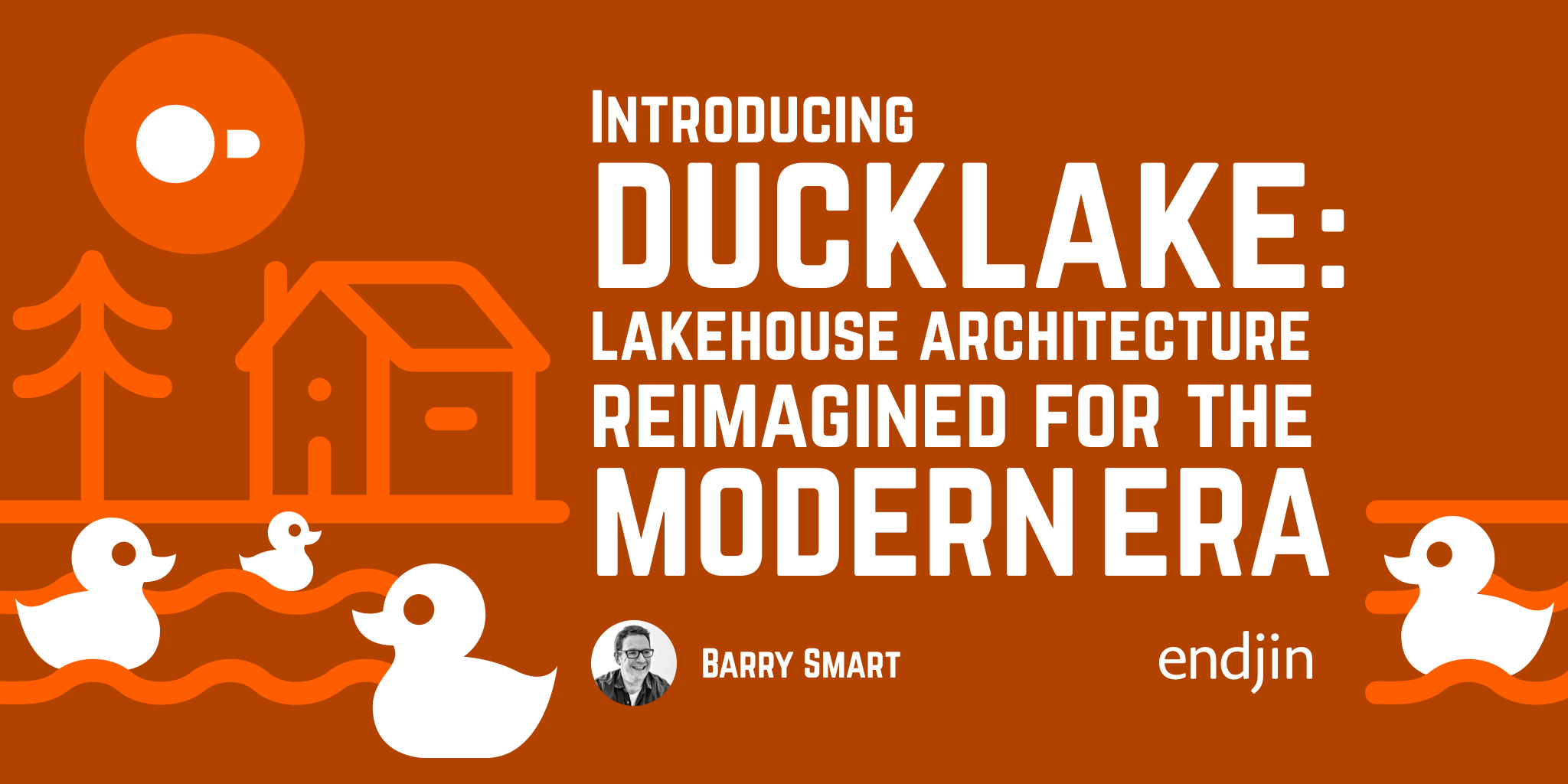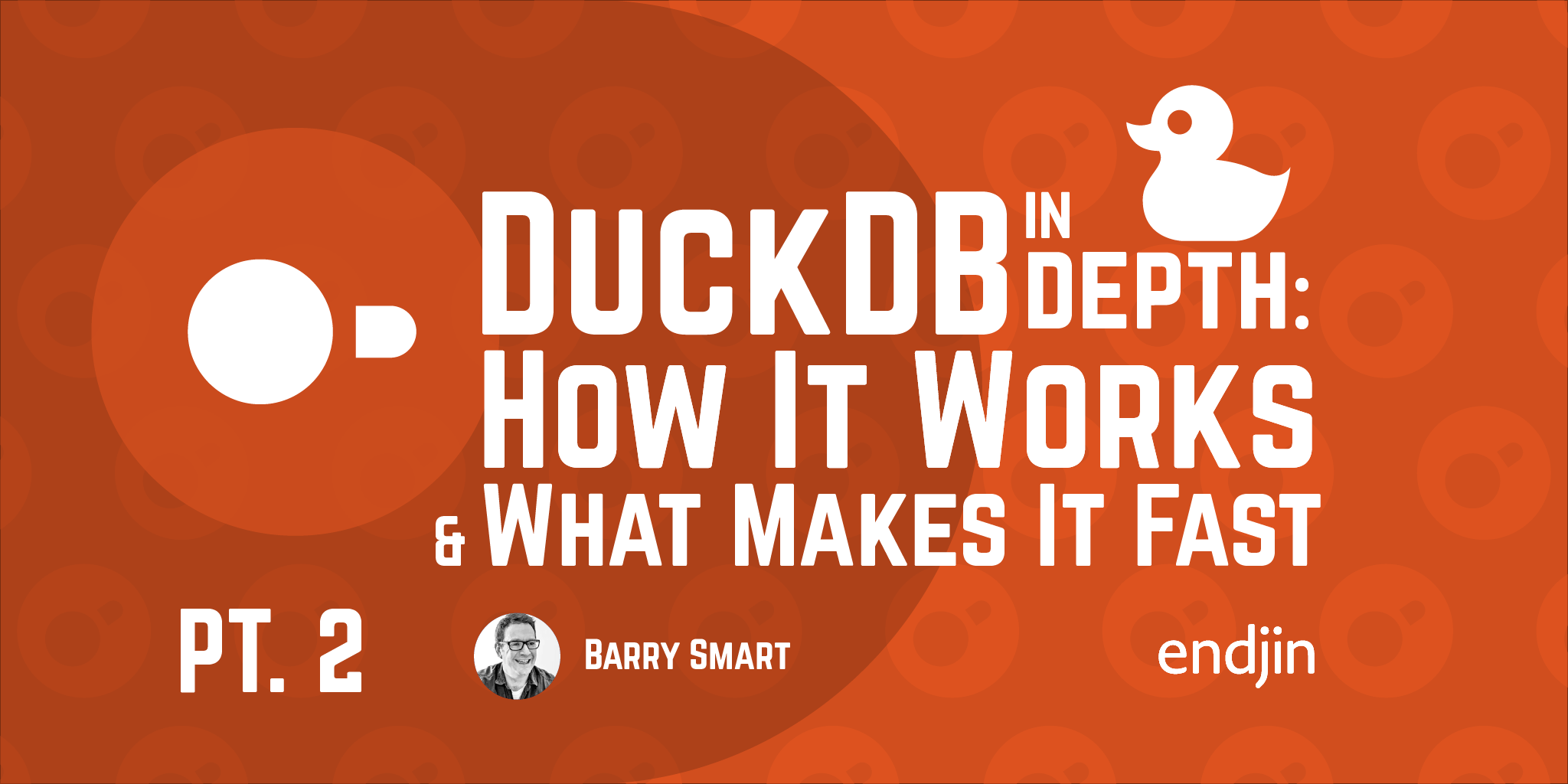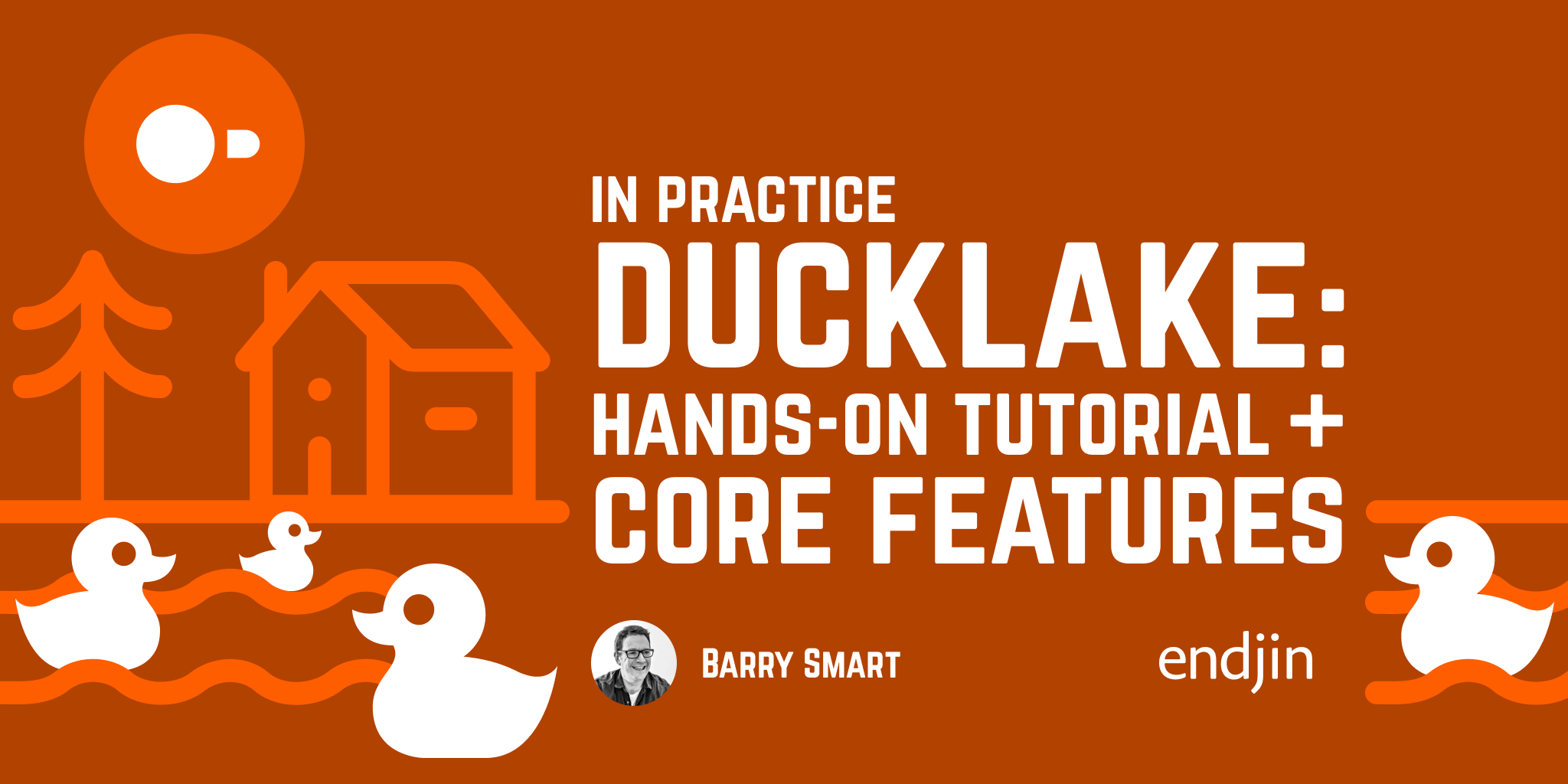DuckLake in Perspective: Advanced Features and Future Implications

TL;DR:
DuckLake's advanced features include built-in encryption for zero-trust architectures, data inlining for performance optimization, and sophisticated conflict resolution mechanisms. While still experimental, DuckLake's simplified architecture and database-backed approach position it as a potential disruptor to established lakehouse formats. It enables new business models including edge computing, enhanced developer experiences, and federated data architectures. Organizations should evaluate DuckLake for specific use cases while monitoring its maturation throughout 2025.
From Implementation to Strategy
In Part 1, we explored DuckLake's architectural philosophy. Part 2 demonstrated its practical capabilities through hands-on examples. Now, in this final article, we'll examine DuckLake's advanced features and analyze its strategic implications for the future of data architecture.
This perspective is crucial for senior practitioners and decision-makers who need to understand not just how DuckLake works, but where it fits in the evolving data landscape and what new possibilities it creates.
In this blog we describe the core capabilities that DuckLake provides to enable a gap analysis with other tools.
Database Features
It provides full support for SQL support for the full array of SQL features, enabling you to write complex arbitrary analytical queries over data stored in a DuckLake.
Underpinning this are advanced features such as:
- Complex Types: support for lists, structs, maps, and arbitrarily nested data types.
- Multi-schema: able to manage unlimited schemas and tables within a single RDBMS instance.
- SQL Views: ability to define and manage lazily evaluated SQL views as part of the catalog.
Schema Management and Evolution
DuckLake brings all of the tools you need for schema enforcement and evolution:
- Multi-Table Transactions: true ACID transactions can be applied across multiple tables.
- Cross-table Schema Evolution: schema and table creation, modification, and removal are fully transactional.
Note - at time of writing some constraints such as uniqueness, foreign key constraints were not implemented in the DuckLake extension for DuckDB, we hope they will arrive at some point soon.
Advanced Data Management
DuckLake supports important DataOps capabilities including:
- Schema-Level Time Travel and Rollback: query tables as of specific points in time - snapshots are consistent across all tables.
- Compatibility: DuckLake maintains compatibility with existing ecosystems - it uses identical Parquet file formats as Iceberg, adopting Iceberg V2 deletion format.
- Migration Path: the team are working on metadata-only import/export from Iceberg tables, with the objective of enabling gradual migration without data movement.
DuckLake's time travel system provides capabilities that extend far beyond simple time travel:
- Millions of Snapshots: Because snapshots are just database rows rather than files, DuckLake can maintain millions of snapshots without performance degradation.
- Partial File References: Snapshots can reference portions of Parquet files, not just entire files. This enables fine-grained change tracking and reduces storage overhead.
- Efficient Change Tracking: The
ducklake_table_changesfunction provides precise incremental analysis between any two snapshots. - Database-Level Operations: Unlike table-level formats, DuckLake snapshots can capture changes across multiple tables atomically.
Data Inlining: Solving the Small Change Problem
One of DuckLake's most innovative features addresses a fundamental performance bottleneck in existing lakehouse formats: the inefficiency of small, frequent updates.
Traditional lakehouse formats face a dilemma with small changes. When you update a single row or insert a few records, these formats must:
- Write a new Parquet file (even for single-row changes)
- Update multiple metadata files
- Perform multiple round trips to blob storage
- Trigger expensive compaction processes
DuckLake's data inlining feature elegantly solves this problem by storing small changes directly in the metadata database until they reach a threshold for consolidation into Parquet files.
- Single-row changes require only a database insert.
- Data is immediately visible and queryable.
- No separate caching layer needed.
- Transactional guarantees maintained.
These small changes are periodically consolidated and transferred to the lake in Parquet format. Because DuckLake snapshots can reference specific portions of Parquet files rather than entire files, the system can create many more fine-grained snapshots than there are physical files on disk. These fine-grained snapshot references eliminate the need for aggressive clean-ups.
Key Benefits:
- Immediate Visibility: Changes are instantly available for queries.
- No File Overhead: Eliminates the cost of writing tiny Parquet files.
- Transactional Guarantees: Maintains ACID properties without performance penalties.
- Automatic Consolidation: Changes are periodically moved to Parquet format.
This approach transforms high-frequency update scenarios from performance bottlenecks into efficient operations. Consider real-time analytics where thousands of small updates occur per minute — DuckLake handles this gracefully while other formats struggle.
Implementation Note: at the time of writing, DuckLake doesn't provide enable you to control when inlined data gets flushed to Parquet files, it does this automatically.
Built-in Encryption and Zero-Trust Architecture
DuckLake includes native encryption support that enables genuinely revolutionary data architecture patterns.
The Zero-Trust Model:
- Each Parquet file is encrypted with a unique key
- Encryption keys are stored exclusively in the metadata database
- Data files can be stored on completely untrusted infrastructure
- Access control is managed entirely through the metadata database
This means you can store sensitive data on publicly accessible blob storage with complete security, since the encrypted Parquet files are useless without access to the metadata database containing the keys. This opens up fascinating new architecture models for federation of data.
However, it also raises the question about whether the DuckLake standard will be capable of supporting post quantum cryptology as security experts are starting to realise that "steal now, decrypt later" is an option for bad actors who are prepared to wait on quantum computing technology maturing to the point where it can be used to solve traditional encryption algorithms.
Strategic Implications:
- Cost Optimization: You can store encrypted data on the cheapest available storage (including public cloud storage) since the files are meaningless without database access.
- Regulatory Compliance: separation of data and access control simplifies compliance with data protection regulations.
- Federation Models: Organizations can share encrypted datasets across trust boundaries, with access controlled through metadata database permissions.
Consider a healthcare scenario where patient data must be analyzed across multiple institutions. DuckLake's encryption model allows the data files to be stored on shared infrastructure while each institution maintains fine grained control over access through the metadata database.
Multiplayer DuckDB: A New Paradigm
DuckLake solves DuckDB's "multiplayer" limitation in an elegant way. Rather than implementing traditional client-server protocols, DuckLake enables a decentralized compute model:
- Each user runs their own DuckDB instance
- All instances coordinate through shared metadata
- Compute scales horizontally without central bottlenecks
- No complex resource scheduling or fairness algorithms needed
This represents what Mühleisen calls "a 2025 data warehouse solution".
Note - in any multi-user database conflicts will occur. DuckLake handles conflict resolution in an intelligent way:
When two connections try to write to a DuckLake table, they will try to write a snapshot with the same identifier and one of the transactions will trigger a PRIMARY KEY constraint violation and fail to commit. When such a conflict occurs - we try to resolve the conflict. In many cases, such as when both transactions are inserting data into a table, we can retry the commit without having to rewrite any actual files.
This could be described as "optimistic concurrency control with intelligent merge resolution" - it combines the non-blocking benefits of optimistic concurrency with sophisticated conflict analysis that can automatically resolve many conflicts that would traditionally require manual intervention.
This approach is particularly well-suited for analytical workloads where many operations (like appends to different tables, or even appends to the same table) can logically coexist and don't need to conflict with each other.
The sequential snapshot ID mechanism with PRIMARY KEY constraints provides a clean, database-native way to detect conflicts while leveraging the RDBMS's transaction capabilities for the resolution logic.
Rather than simply aborting the failed transaction, DuckLake analyzes the logical changes to determine if automatic resolution is possible:
Automatic Resolution Scenarios:
- Concurrent appends to different tables
- Non-overlapping data insertions to the same table
- Schema changes that don't conflict logically
- Concurrent operations on different schemas
Conflict Scenarios Requiring Manual Resolution:
- Both transactions trying to drop the same table
- Concurrent schema alterations to the same table
- Attempts to modify data that another transaction has deleted or altered
- Compaction operations conflicting with data modifications
This intelligent approach dramatically reduces the friction of concurrent operations while maintaining data integrity.
What DuckLake Gets Right
DuckLake's architectural approach addresses real pain points:
- Simplified infrastructure: only two technology choices to make: RDBS and object storage. Both of which are commodity infrastructure.
- Proven scalability: DuckLake is based on architectures already running at massive scale.
- Open standards: a standard that provides full visibility into both data and metadata.
- Multi-table capabilities: true catalog-level operations.
- Performance improvements: especially for small frequent updates.
Areas To Note
However, several areas warrant consideration:
Experimental Status: while the foundation seems solid - the DuckLake extension for DuckDB is not feature complete nor sufficiently field tested for production workloads. The DuckLake extension is currently describe as "experimental". The authors acknowledge this, in response to the question "Is DuckLake production-ready?" in the DuckLake FAQ, the response currently is: "While we tested DuckLake extensively, it is not yet production-ready as demonstrated by its version number . We expect DuckLake to mature over the course of 2025." In oder parlance, we'd describe it as an alpha release: a technical showcase of a future direction that needs work to get to beta then production before you can bet your organisation on it.
Snapshot Tooling Is Basic: the tools available to inspect snapshots feel limited. We acknowledge there is complexity due to snapshots being scoped to the entire database rather than individual tables. But it is difficult to create a summary of snapshots that have impacted a specific table. Whilst time travel is available in a
SELECTstatement, there no tools available yet to regress the database as a whole back to a previous snapshot. We're sure all of this will come with time and it's why feedback from the user community to the DuckDB Labs team is important. We'd encourage you to raise issues or make feature requests on the DuckLake GitHub repo.File Organization: the current implementation uses a flat file structure without folder hierarchies to model concepts such as schemas, tables, or partitions. This may be a surprise to users who have grown used to patterns adopted by Delta Lake which makes use of folders to organise the underlying parquet files. However, the flat file structure makes sense because it does not bind the files into a structure that may need to change when actions such as re-naming a table is performed.
Access Control: a graph based security model (or attribute based access control) is the only approach that provides the flexibility needed to meet the complex demands of many organisations. Whilst DuckLake provides the foundations with native encryption support, there is no "out of the box" access control integrated into the DuckLake standard at the time of writing.
Market Momentum: Iceberg and Delta have significant market adoption and ecosystem support. Whether DuckLake can overcome this inertia remains to be seen. Or will it remain a niche solution with a passionate and dedicated fanbase?
Migration Complexity: while Iceberg compatibility is planned, organizations deeply invested in existing formats and platforms face potential migration overhead. That doesn't prevent DuckLake being used for specific narrow use case where it is deemed it could offer an advantage or act as a proof of concept.
Looking Ahead: The Future Enabled by DataLake
What's certain is that DuckLake has introduced important ideas about simplicity, openness, and leveraging proven database principles. In a field often characterized by unnecessary complexity where the answer is often to add another layer of abstraction or to throw more compute at the problem, these contributions alone are valuable.
As we continue exploring the intersection of modern hardware capabilities and analytical workloads, DuckLake extends the "data singularity" concept into multi-user scenarios — enabling thousands of DuckDB instances (running "in process" rather than on dedicated compute infrastructure such as Spark) to interact with a DuckLake, coordinating through elegant, scalable, database-managed metadata.
It has certainly captured our attention, fuelling our imagination about the disruptive business models that it could enable. For example:
Edge computing revolution - by enabling edge compute to interact directly and safely with a lakehouse. For example, in the water industry, would DuckLake enable hundreds of field devices connected to sensors to periodically write their telemetry data directly to a lake? This is very much in the purview of technologies such as NATS, but DuckLake could augment powerful event driven services by shortening the pathway for data collected at the edge that is destined for centralised analytics.
Smoothing the route from experiment to data product - with DuckDB becoming increasingly popular with data scientists and data analysts, could DuckLake streamline the process of getting solutions that have been incubated in the lab into production scale use?
Developer experience - could DuckLake "turbo charge" data engineers by enabling them to harness the power of their laptop for development, whilst making the deployment onto enterprise grade infrastructure trivial?
New cost models - with DuckLake's decentralized compute model, organisations have an opportunity to move from fixed capacity costs to true consumption-based pricing. From a Cloud FinOps perspective "in process" technologies such as DuckDB and Polars can be used to reduce your cloud compute expenditure by leveraging CapEx investments in personal devices for some or potentially all of the processing needs. DuckLake now opens up the opportunity for the data to be written to a shared, enterprise scale, multi-user environment. The implications need to be thought through carefully as cloud compute costs will replaced with storage ingress and egress costs. However the latest generation of storage technologies such as OneLake which offers local caching to devices could help to alleviate this.
Market disruption - with a small number of mega vendors currently dominating the data and analytics space, could DuckLake disrupt the market by providing an alternative open source platform which avoids the complexity and specialist skills that have traditionally been required to build, operate and maintain open source data platforms?
A new standard for the wider ecosystem - DuckLake’s SQL-based metadata specification makes it simple for vendors to implement connectors and integrations. Will organisations such as Microsoft add support for DuckLake to PowerBI / Fabric? They have the underlying infrastructure in their stack: a mature RDBMS (SQL Server, for metadata management) and an object store (OneLake or Azure Blob, for data storage). Given the open and simple mature of the DuckLake standard, it's not inconceivable for a wide range of vendors to make the investment required to add support for DuckLake to their products.
Cloud-agnostic data strategies - since DuckLake only requires generic object storage and an RDBMS, could organizations more easily implement multi-cloud strategies without tying themselves into vendor-specific lakehouse formats?
AI/ML Workflow Acceleration - could DuckLake's data inlining and transactional capabilities eliminate the complexity of traditional feature stores by enabling real-time feature updates directly in the lakehouse? DuckLake's snapshot capabilities will certainly provide powerful model artifact versioning and data lineage tracking for MLOps toolchains.
Socio-technical transformation - could the simplified "multi-user" architecture enable new ways of multi-disciplinary working which helps to democratise data, empower people, reduce time to value and accelerate innovation?
DuckLake is available as an open-source DuckDB extension under the MIT license. To learn more, visit the DuckLake web site and try the extension with INSTALL ducklake; in DuckDB 1.3.0 or later.




